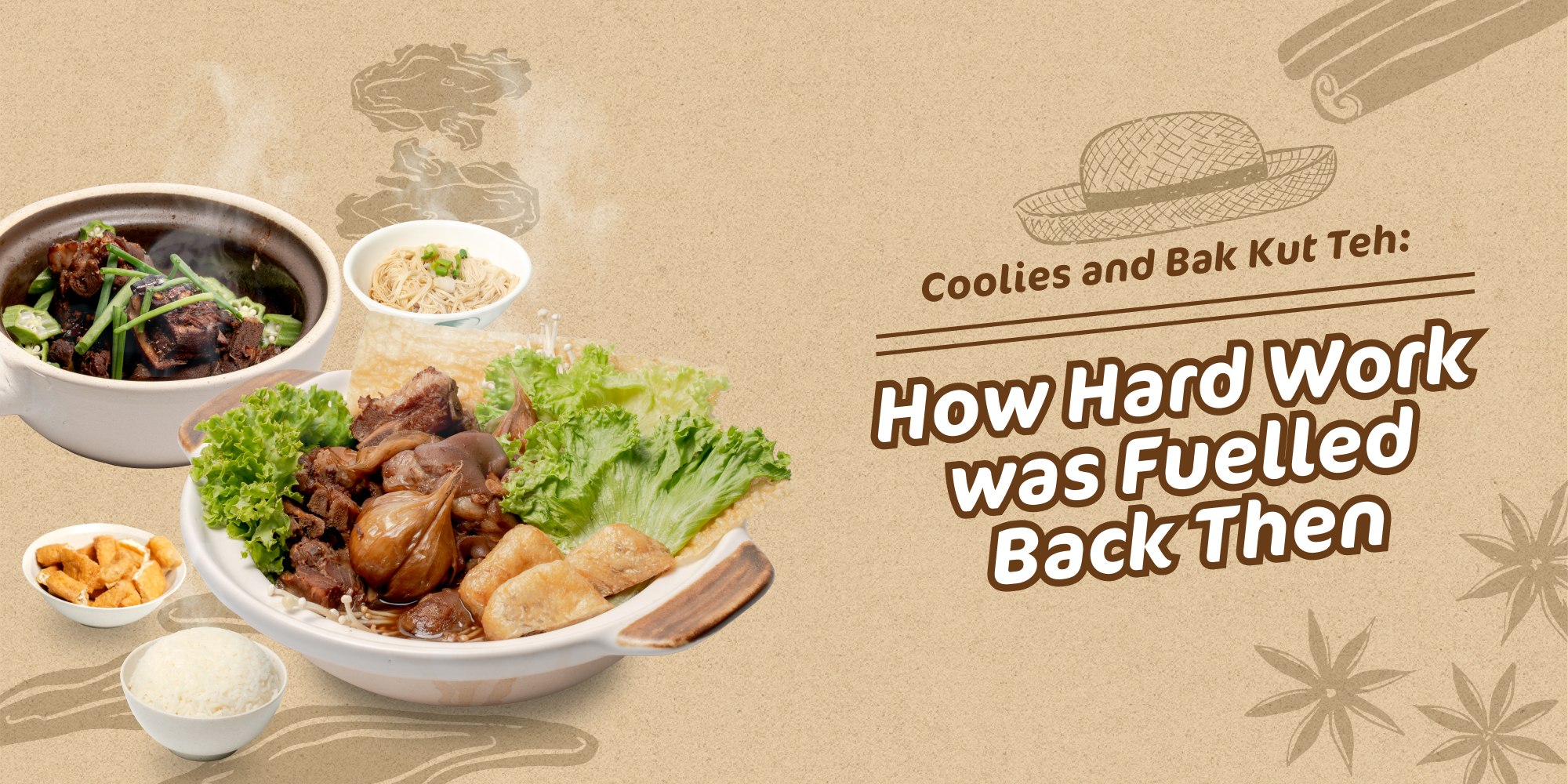Imagine this: you are a young Chinese man, and you’ve heard-tell of great fortunes to be earned across the South China Sea. After braving the arduous journey from China to British Malaya, you are only greeted with a lifetime of back-breaking work. That was commonly the origin and plight of coolies, and life was hard for them.
Coolies performed difficult, unskilled labour such as construction, agriculture, mining and rickshaw-pulling. Such work demanded much from their bodies, and they needed food that could fortify and fuel them throughout their day. The answer was bak kut teh.
Bak kut teh, an invention of necessity
Delicacies like herbal bak kut teh and dry bak kut teh are regarded as comfort food today (pair them with vinegar pork trotter for a sublime experience!) Back in the day though, the dish had a humbler status. It was considered the poor man’s food, because in places like Klang, the pork bones used in the soup were meant to be discarded by the abattoirs. It was no different for the coolies in Singapore. For example, those who worked the ports sourced their pork across the Singapore River.
These pork bones were then boiled with dark soy sauce and Chinese medicinal herbs, and were typically consumed for breakfast, as a means to prime their bodies for their day of hard work ahead.
It was believed that the pork bones fortified the immune system, whereas the little bits of meat on the bones provide energy and some collagen to lubricate the joints. Medicinal herbs like liquorice and dang gui soothed the throat and balanced the qi in the body, and the dark soy sauce replaced lost minerals from sweating.
The evolution of comfort food
As the 1940s arrived, and with increased affluence and a declining coolie trade, bak kut teh became more of a gourmet feature in restaurants. More premium cuts of the pig were used, and customers flocked to try them, solidifying its popularity.
Today, we’re spoiled for choice with a multitude of bak kut teh restaurants to choose from. But if you want authentic Klang bak kut teh, you have to try Feng Xiang’s herbal bak kut teh. Don’t let its savoury flavour profile fool you – it is as nutritious as it is delicious. Consisting of 15 high quality herbs and using no MSG, the soup base is lovingly prepared for between 4 hours to sometimes half a day to bring out the fragrance and health benefits of the herbs.
And that’s before we add in the pork ribs! They are first cooked for an hour to produce that wonderful peel-off-the-bone tenderness, and only then do we add them to the soup.
So pop on down to Feng Xiang for an adventure of good taste and nutritiousness. And while we’re enjoying these dishes, let us never forget that were it not for the ingenuity and resourcefulness of our hardworking coolies, we’ll never have such delights.
Savour the taste of history and culture at Feng Xiang
Still up for more? Why not try our umami-bomb of a dish, our klang fried porridge? It’s not a Klang favourite for nothing. Much goes into preparing it – first we simmer the porridge in a flavourful broth, before frying it in a wok for that wokhei flavour. Visit us and try the full menu at any of our outlets below:
- Fernvale Hawker Centre & CC (nearest MRT station: Sengkang)
- Food Republic @ BreadTalk iHQ (nearest MRT station: Tai Seng)
- Food Republic @ VivoCity (nearest MRT station: HarbourFront)
- Food Republic @ Parkway Parade (nearest MRT station: Dakota)
- Kopitiam @ AMK Hub (nearest MRT station: Ang Mo Kio)
- Kopitiam Food Hall @ JEM (nearest MRT station: Jurong East)
- Kopitiam @ Northpoint City (nearest MRT station: Yishun)
- Lau Pa Sat (nearest MRT station: Downtown)
- Senja Hawker Centre (nearest MRT station: Bukit Panjang)

